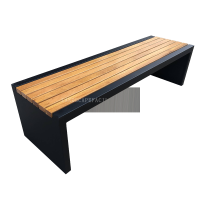Welcome to the website for landscape facilities products and knowledge.
How does the bin’s design ensure it remains clean and sanitary in public spaces?
Public bins play a crucial role in maintaining cleanliness, but their design directly impacts hygiene and sanitation. Modern bins incorporate several key features to ensure they remain clean and odor-free in high-traffic areas.
1. Smooth, Non-Porous Materials: High-quality bins use stainless steel, coated plastic, or antimicrobial materials that resist stains, bacteria buildup, and are easy to wipe down.
2. Sealed Lids & Foot Pedals: Touchless designs with foot-operated lids minimize direct contact, reducing germ transmission while preventing pests and odors from escaping.
3. Liner Retention Systems: Built-in hooks or frames secure trash bags firmly, preventing leaks and simplifying waste removal without residue left behind.
4. Ventilation & Odor Control: Some bins include carbon filters or vented designs to neutralize smells, while others use UV light to inhibit bacterial growth.
5. Sloped Surfaces & Drainage: Angled tops discourage littering, and drainage holes prevent liquid accumulation, reducing mold and insect attraction.
6. Smart Sensors & Automation: Advanced models feature automatic opening/closing, compaction to reduce overflow, and even self-cleaning mechanisms.
By combining these elements, well-designed bins promote proper waste disposal while simplifying maintenance—keeping public spaces sanitary and visually appealing. Municipalities and businesses prioritizing such designs see reduced contamination risks and lower long-term cleaning costs.
Related search:

Recommendation
Modern Stainless Steel Begonia Wood Park Chair Outdoor Courtyard Leisure Sun Protection Bench Long Seat